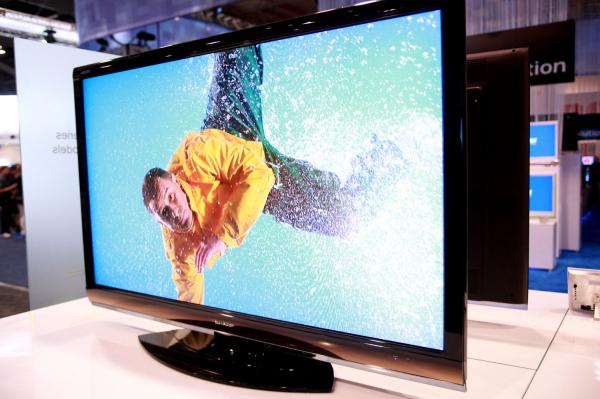
Feb. 1 (UPI) — A novel blue-phase liquid crystal could bolster the resolution and energy efficiency of TVs and computer displays. Researchers designed the new crystal for use in field-sequential color liquid crystal displays, or LCDs.
“Today’s Apple Retina displays have a resolution density of about 500 pixels per inch,” lead researcher Shin-Tson Wu, a professor of optics and photonics at the University of Central Florida, said in a news release. “With our new technology, a resolution density of 1500 pixels per inch could be achieved on the same sized screen. This is especially attractive for virtual reality headsets or augmented reality technology, which must achieve high resolution in a small screen to look sharp when placed close to our eyes.”
Current high-definition displays use a layer of nematic liquid crystal to modulate the white LED backlight. Color filters are applied to the backlight to generate red, green and blue pixels. The application of all three filters produces white light.
The new blue-phase liquid crystal can modulate light at a much faster rate than nematic liquid crystal, eliminating the need for filters. Different color pixels can be transmitted in quick succession. Rapid-fire pulses of blue, red and green light translates to white light through human eyes.
“With color filters, the red, green and blue light are all generated at the same time,” explained Wu. “However, with blue-phase liquid crystal we can use one subpixel to make all three colors, but at different times. This converts space into time, a space-saving configuration of two-thirds, which triples the resolution density.”
The elimination of filters reduces the amount of energy lost during light transmission, making the process more efficient.
However, use of the new crystal required a higher voltage to drive each pixel. Researchers developed a new type of film transistor with a protruded electrode structure, allowing each electric jolt to penetrate deeper into the liquid crystal.
“We achieved an operational voltage low enough to allow each pixel to be driven by a single transistor while also achieving a response time of less than 1 millisecond,” added Haiwei Chen, a doctoral student in Wu’s lab. “This delicate balance between operational voltage and response time is key for enabling field sequential color displays.”
Now, researchers plan to translate their findings — published in the journal Optical Materials Express — into a working display.
“Now that we have shown that combining the blue-phase liquid crystal with the protruded electron structure is feasible, the next step is for industry to combine them into a working prototype,” said Wu.






